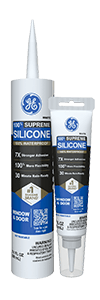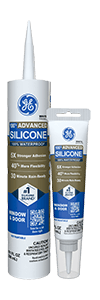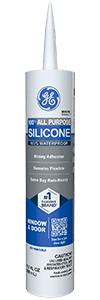Note: This DIY article is provided as a general guide only and is not intended to take the place of product-specific installation procedures; always follow applicable manufacturers’ instructions. Depending on your home’s age and condition, location within the home, and other potential factors, repairs and/or upgrades or other services may be necessary prior to the beginning and/or completion of your project that may involve the services of a home improvement professional. This article does not include advice pertaining to local building codes and/or any related inspections.
In construction, picking out the best silicone sealant can be daunting. Whether you’re working on home improvement or a construction project, this article will help you pick the proper silicone sealant to ensure durability and longevity.
What are the different types of silicone sealants?
Understanding the different types of silicone sealants helps you to match the best sealant for your project. Below are some of the common criteria used for sealants, including an in-depth guide on when to choose which sealant.
Silicone sealants can be broadly categorized into acid-cure and neutral-cure sealants, depending on the nature of substances released during curing.
Acid-cure silicone sealants
Acid-cure silicone sealants (acetoxy silicone sealants) release acetic acid as a byproduct while curing. Acetic acid (an ingredient in vinegar) is responsible for the strong, pungent smell of acid-cure sealants while also allowing them to cure faster than their neutral counterparts.
Acid-cure sealants have high modulus and, therefore, cure faster and harder, making them an excellent choice when rapid cures and strong adhesion are important. They are great for non-porous surfaces, including glass-on-glass adhesion, or on glazed tiles.
Due to the acidic property of acid-curing silicone sealant, sensitive materials with a high risk of corrosion or staining, such as electronics, some metals, and natural stones, should be avoided.
Neutral-cure silicone sealants
Most of the other sealants available fall under neutral-cure silicone sealants. Unlike acetoxy sealants, neutral-cure sealants cure through reactions that involve alcohol or oxime and do not release acidic by-products. Consequently, they work perfectly with sensitive materials such as electronics, metal surfaces, and natural stones that might have been tarnished or corroded by acetoxy sealants.
Neutral-cure silicone sealants are usually low modulus and, therefore, cure slightly slower. However, they have little to no odor and a flexible elastic seal. Thanks to their weather resistance and ability to bind with a variety of surfaces, neutral-cure sealants offer some of the best outdoor waterproof silicone sealants.
Ideal silicone sealant applications
Different types of silicone sealants are formulated for various use scenarios. Sealant labels might include specifiers for “kitchen and bath” or “window and door.” Understanding the strengths that make that specific silicone sealant perfect for that scenario will help you make an informed decision.
Below are some silicone sealants based on ideal applications with a guide on flexibility and durability.
Window and door sealant
A distinct feature of windows and doors is their function as an indoor-outdoor interface. You want your windows and doors to keep moisture, pests, and drafts outside of your house, and the same goes for a silicone sealant meant to seal them.
From extreme changing temperatures between the seasons to mold resistance and even UV-ray resistance, a window and door sealant must do it all.
Flexibility: Window and door silicone sealants come in a range of options.
- If you prioritize flexibility, consider the Supreme Silicone Window and Door Sealant with 100% more flexibility – ideal when maximum movement and durability are needed.
- The Advanced Silicone 2 Window and Door Sealant offers 40% more flexibility, 10-year mold protection, and 30-minute readiness for faster project turnaround.
- The All Purpose Silicone 1 Sealant offers permanent flexibility, 7-year mold-free protection, and same-day water readiness for every day sealing needs.
Durability: Window and door sealants offer extreme durability thanks to their weather resistance, UV degradation resistance, and mold protection.
Additional features to consider when picking window and door sealants are their low odor, availability of squeeze tube options, paintability, and joint movement.
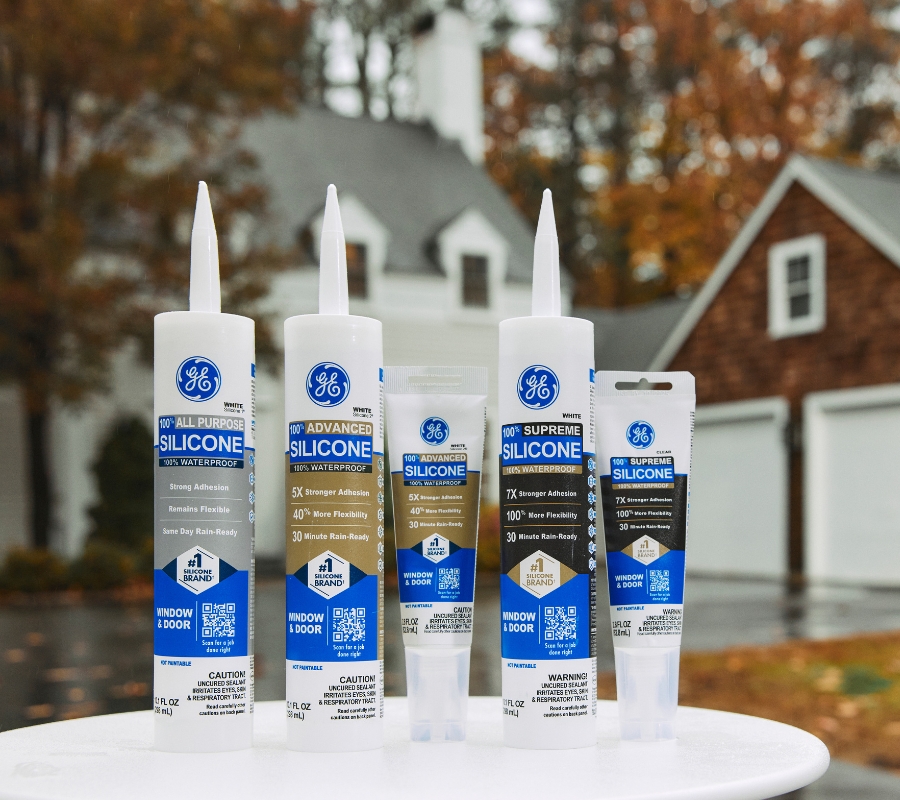
Kitchen and bath sealant
The kitchen and bathroom are synonymous with water and heat, presenting unique challenges for any silicone sealant. Any silicone sealant in these environments has to contend with the extremes of temperature (both hot and cold), mold development, and exposure to moisture and humidity.
Kitchen and bath silicone sealants are designed with this environment in mind and offer the following advantages to a home renovation or construction project.
Flexibility: In any moisture-ridden environment, water and humidity facilitate the expansion and contraction of surfaces, which demands additional flexibility from any surface adhesive. Different sealants offer varying levels of flexibility for your kitchen and bath needs.
- The Supreme Silicone Kitchen and Bath Sealant provides professional-level flexibility (100% more flexible) and a lifetime mold protection guarantee – ideal for long lasting, high-moisture performance.
- The Advanced Silicone 2 Kitchen and Bath Sealant is an excellent choice for fast-paced projects, offering strong adhesion and 30-minute water readiness.
- The Tub and Tile Silicone 1 Sealant is your go-to silicone sealant for routine sealing jobs, with dependable same-day water readiness.
Durability: The kitchen and bathroom experience the brunt of indoor moisture and humidity. Consequently, kitchen and bath silicone sealants come equipped with advanced chemical formulas that confer strength, flexibility, heat tolerance, and mold protection, all of which improve their durability.
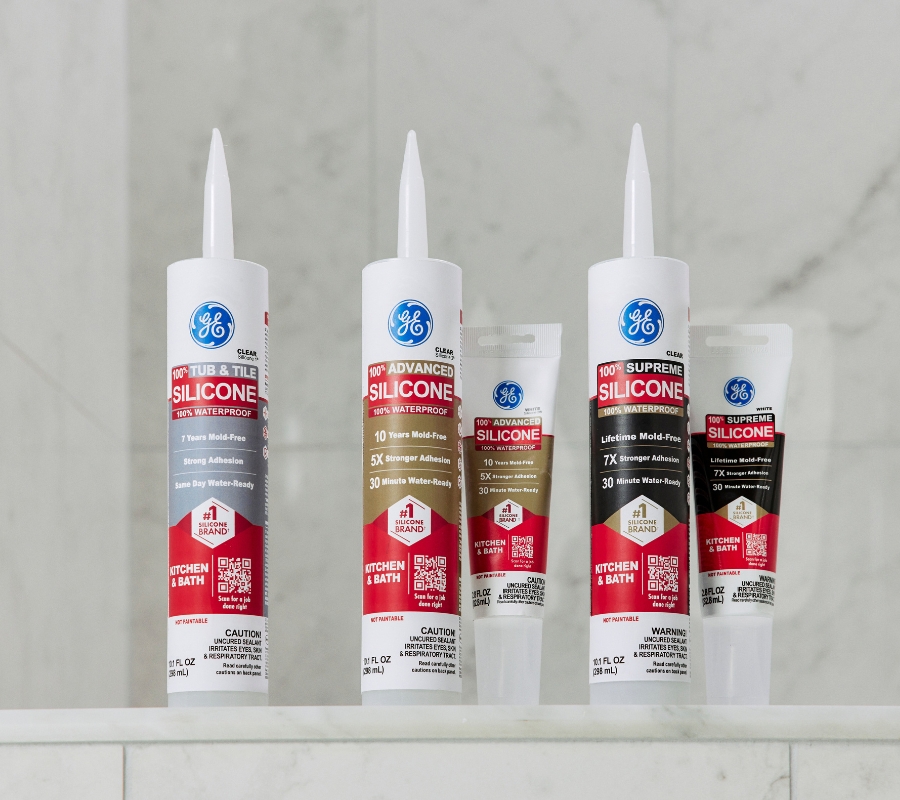
Depending on how quickly you might need to use a surface in the kitchen or bathroom, you should consider how long the silicone sealant takes to be moisture-ready. For outdoor projects, rain readiness can also guide the choice of a silicone sealant.
Specialty silicone sealants
The conventional silicone sealant may come up short when working with PVC, metal, concrete, or non-porous surfaces. Regardless of the circumstance, you can rest assured that a silicone sealant is specifically engineered to meet your project requirements. Examples of specialty silicone sealants include:
- Gutter silicone sealant: Working on gutters presents several complications when selecting an appropriate silicone sealant. You require the best sealant to stop water leaks, one that is adequately flexible to prevent shrinkage and cracking, and one that will not corrode the metal surface it adheres to. In this case, Gutter Silicone Sealant is the only right answer. In addition to its durability and flexibility, the Gutter Silicone Sealant will not blemish most high-end metals.
- Metal silicone sealant: Metal roofs, siding, sheds, vents, and RVs present challenges when working with conventional silicone sealant. Much like glass, most metals have a relatively smooth and non-porous surface with low surface energy, consequently causing weak bonds. The Metal Silicone Sealant is made with this complication in mind and provides strength and durability to the bonded surface.
- Concrete silicone sealant: Concrete, mortar, stone, and related surfaces are all porous. When choosing a silicone sealant to apply to these surfaces, it should be capable of adhering to both wet and dry surfaces, maintaining permanent flexibility, and offering excellent weather and moisture resistance. The Concrete Silicone 2 Sealant is an excellent example of such a silicone sealant.
How to pick the best silicone sealant for your project
The most important step when picking out the best silicone sealant for your project is determining the most important factors. Whether flexibility, durability, or weatherproofing are your dealbreakers, your ultimate choice ticks off as many boxes as possible and guarantees that you (or your clients) will be satisfied with the project’s outcome.
Once you identify the best silicone sealant for your home renovation or construction project find a store near you in the US or a store near you in Canada.

